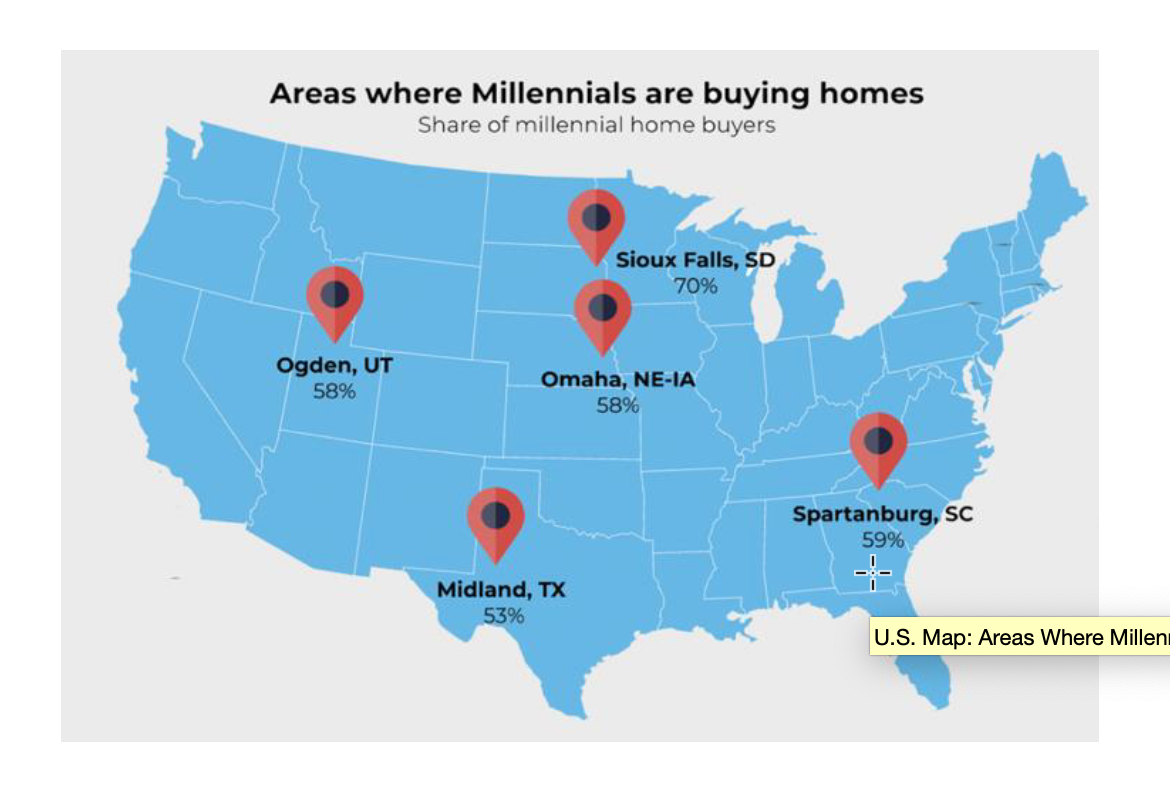The areas might surprise you – and are likely to see prices continue to rise

Housing has been on a tear for the past 10 years, with homes currently going under contract within 24 hours, often above asking-price, and bidding wars erupting all over the country. But as mortgage rates rise, home affordability becomes more challenging and we might begin to see housing retreat from its recent frothy levels.
In fact, according to the National Association of Realtors, pending home sales dipped in both January and February, providing a little relief for buyers. At the end of March, the NAR reported that:
- The Pending Home Sales Index, a forward-looking indicator of home sales based on contract signings, dropped 10.6% to 110.3 in February and that
- Year-over-year, contract signings fell 0.5% (an index of 100 is equal to the level of contract activity in 2001).
Across the country, homes priced above $250,000 have mostly been driving sales for the last several months, but there is a low-inventory dilemma facing buyers, forcing buyers to enlarge their geographical area.
And that’s just what Millennials are doing.
Where Millennials are Buying Homes
According to the NAR, Millennial buyers make up the largest share of home buyers at 37%. And it might surprise you to know that millennials have been the largest share of home-buyers since 2014.
The NAR sought to identify areas with higher shares of millennial home buyers and here is where Millennials are buying – accounting for more than 50% of new home sales in these five locations:

It should be no surprise why Millennials are snapping up homes in these areas. It’s because the homes are more affordable. And with rates continuing to rise (as evidenced by the 10-year U.S. Treasury increasing more than 1% since August last year), these locations and others with similar characteristics can expect home prices to increase and supply to dwindle.
To underscore the affordability criteria, the NAR reports that almost 70% of millennials can afford to buy the typical home in these five areas compared to 62% nationwide. And while that might not seem like much, the cumulative impact will positively impact the economies of those five areas.
For instance, in Omaha, Nebraska, 73% of millennials can afford to buy the typical home in the market with a 10% down payment. In Midland, Texas, inventory is up 42% whereas inventory nationwide is down 47%.
So while millennials will continue impacting housing for years to come, there are other long-term consequences for local economies that you might not have anticipated. Because those born between 1981 and 1996 have incredible buying power.
Copyright © 2021 FMeX. All rights reserved. Distributed by Financial Media Exchange.
The opinions expressed herein are those of Ballast Advisors, LLC (“Ballast”) and are subject to change without notice. This material is for informational purposes only and should not be considered investment advice. Ballast relies on information from various sources believed to be reliable, including third parties, but cannot guarantee the accuracy and completeness of any third-party information. Ballast is an independent investment adviser registered under the Investment Advisers Act of 1940, as amended. Registration does not imply a certain level of skill or training. More information about Ballast including our investment strategies, fees, and objectives can be found in our ADV Part 2, which is available upon request.
